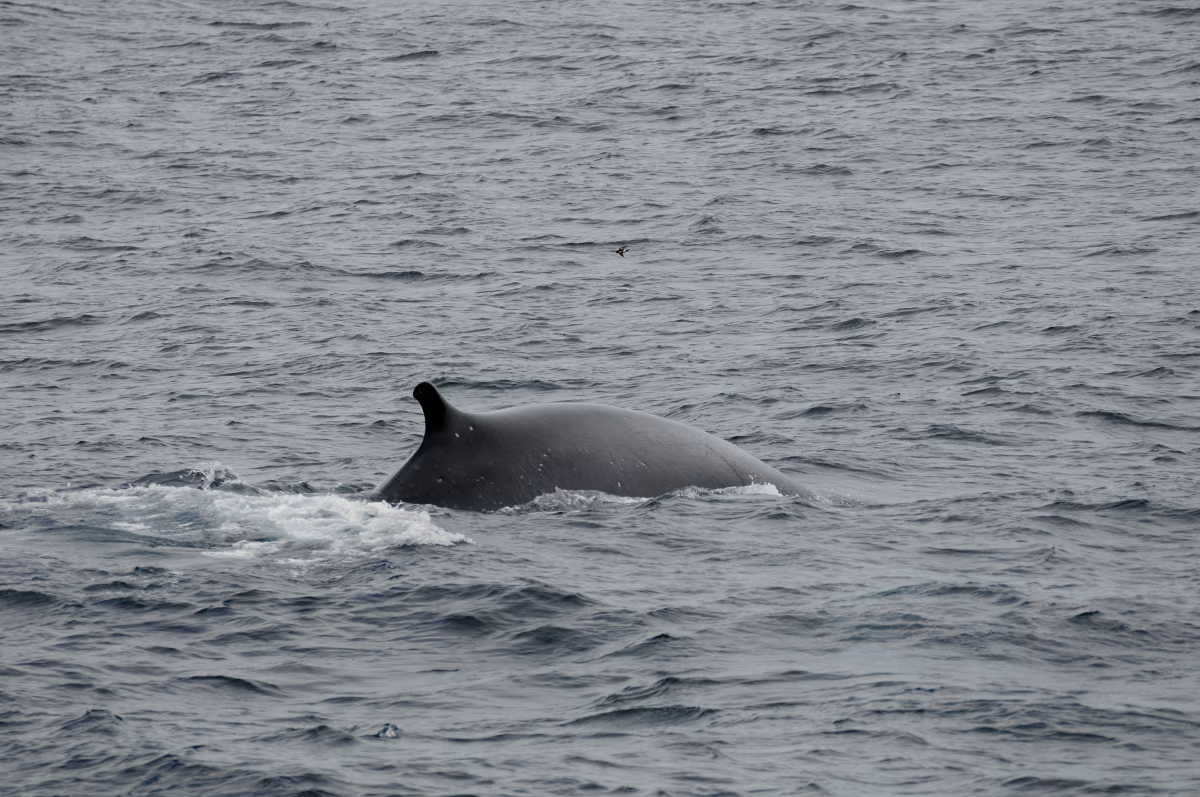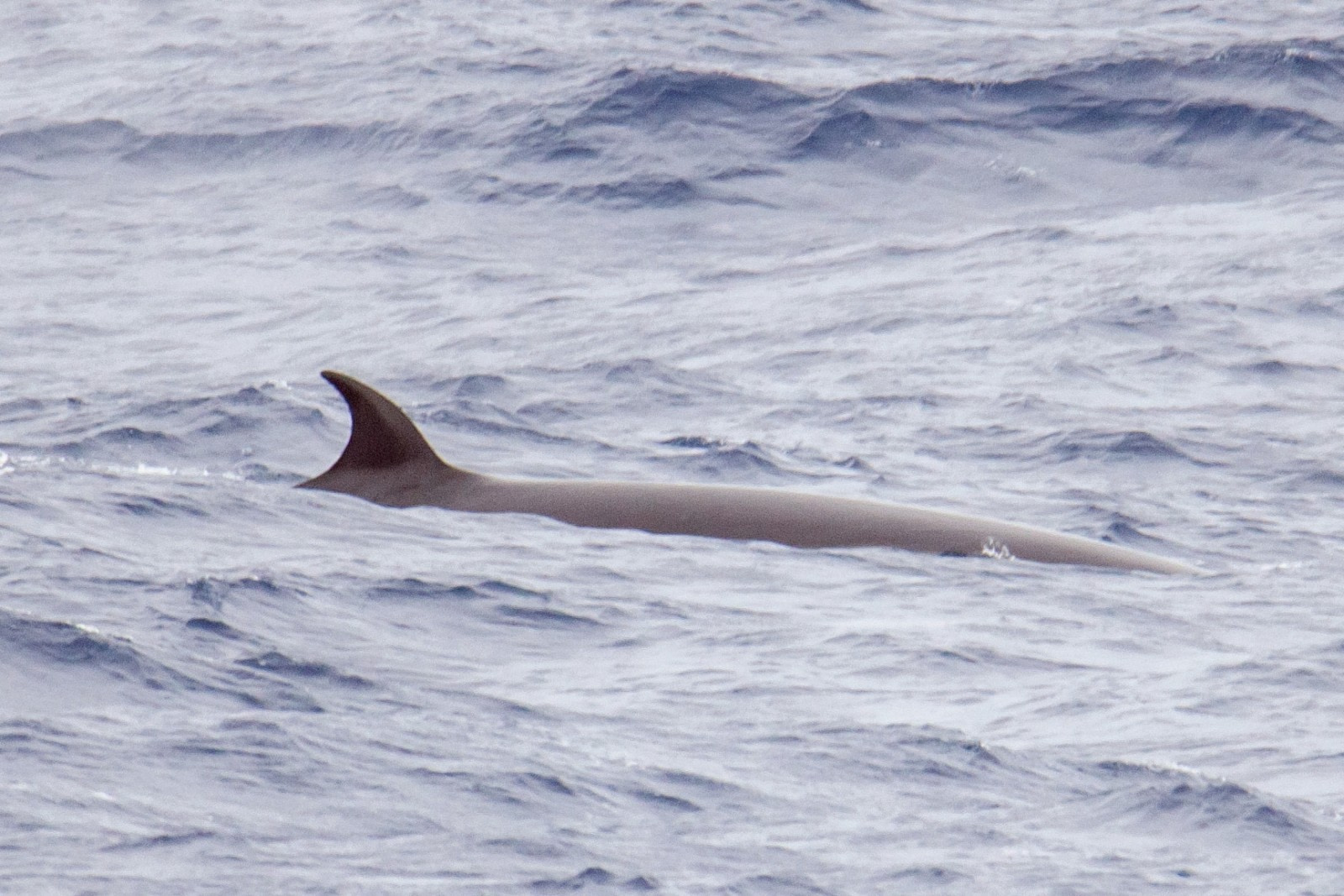Name: Sei Whale (Balaenoptera borealis)
Length: 19.5m.
Weight: 28 tonnes.
Location: All open Oceans between the Polar Regions.
Conservation status: Endangered.
Diet: Krill, copepods, other zooplankton.
Appearance: Dark bluish-grey with a lighter underside.
By Christin Khan, NOAA / NEFSC (http://cbkhan.blogspot.com/) [Public domain], via Wikimedia Commons
How do Sei Whales feed?
Like all baleens, Sei Whales open their mouths while swimming to gulp in large amounts of water. They then strain the water back out through their baleens (a kind of plate), trapping the krill inside to be consumed.
Sei whales are relatively shallow divers, staying under from 5 to 15 minutes. Instead it stays near the surface of the water, swimming on its side through clouds of krill or other prey. Sei Whales will eat about 900kg of food per day.
Are Sei Whales social?
Sei Whales sometimes travel solo, while others group into pods of up to 6 members.
How fast do Sei Whales swim?
Sei Whales are one of the fastest of all cetaceans (Whales, Dolphins, and Porpoises), able to reach speeds of up to 50 mph for short sprints.

Picture by Erwin Vermeulen
What are Sei Whale breeding cycle like?
Females give birth every 2 to 3 years, usually to a single calf. Both males and females reach sexual maturity when they are around 9 years old.
Sei Whales mate in temperate, sub-tropical seas during the winter. The pregnancy lasts from 10 ¾ months to 1 year. The calf is weaned from 6 to 9 months after its birth, when it will have grown to the length of about 8 or 9 metres.
How long do Sei Whales live?
Sei Whales live up to 65 years.
How many Sei Whales are there today?
There are about 80,000 Sei Whales in the world today. That is about 1/3 of the population that existed in the world before the whaling boom of the late 1800s through early 1900s.
Do Sei Whales have any natural predators?
The only natural predator a Sei Whale faces is a pack of Orcas (Killer Whales).

Picture by Michael Wenger
7 Scintillating Sei Whale Facts
- Sei Whales are the 4th largest rorqual (the largest group of baleen whales) after the Blue Whale, the Fin Whale, and the Humpback Whale.
- The “Sei” in “Sei Whale” comes from the Norwegian word for Pollock, a type of fish. The Norwegians observed that Sei whales and Pollock tended to arrive in the same areas at the same time every year.
- American naturalist Roy Chapman Andrews compares the Sei Whale to the Cheetah because they can swim very fast for a short distance but they tire fairly quickly.
- Like other Baleens, the Sei Whale has 2 blow holes instead of just 1.
- Although Sei whales prefer travelling solo or in small pods they will sometimes congregate by the thousands in an area where a food source is plentiful.
- Unlike other Baleens the Sei prefers to stay out of the truly cold waters of the Polar Regions, sticking to more temperate areas.
- The words in the scientific name Balaenoptera borealis mean “winged whale” and “northern.”



